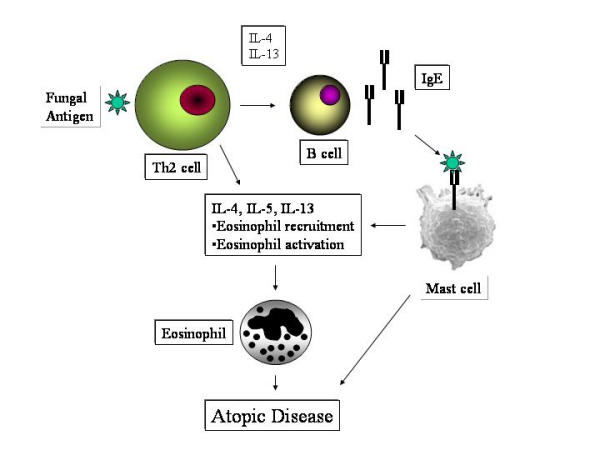Figure 4.

Activation of cutaneous and/or circulating T cells by fungal antigens could induce a Th2-dominant response leading to elaboration of IL-4, IL-13 and IL-5. The first 2 cytokines can lead to two pivotal effects: Synthesis of IgE by B cells and endothelial activation leading to eosinophil recruitment by a vascular cell adhesion molecule (VCAM)-very late activating antigen 4 (VLA-4) adhesion molecule pathway. Both IgE and eosinophils play a prominent role in atopic disease. IgE in the presence of antigen can cross-link mast cells leading to further cytokine, chemokine and mediator production. The other cytokine, IL-5, enhances eosinophil production from the bone marrow, eosinophil activation, survival, recruitment and degranulation. These processes can result in expression of atopic disease, from rhinitis and asthma to atopic dermatitis.
